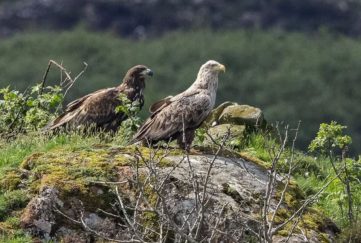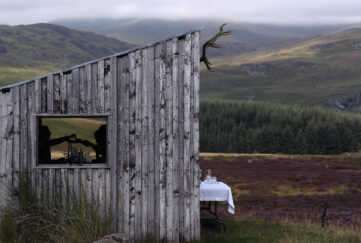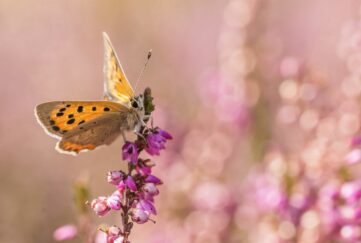Reintroducing The Red Kite – Jim Crumley
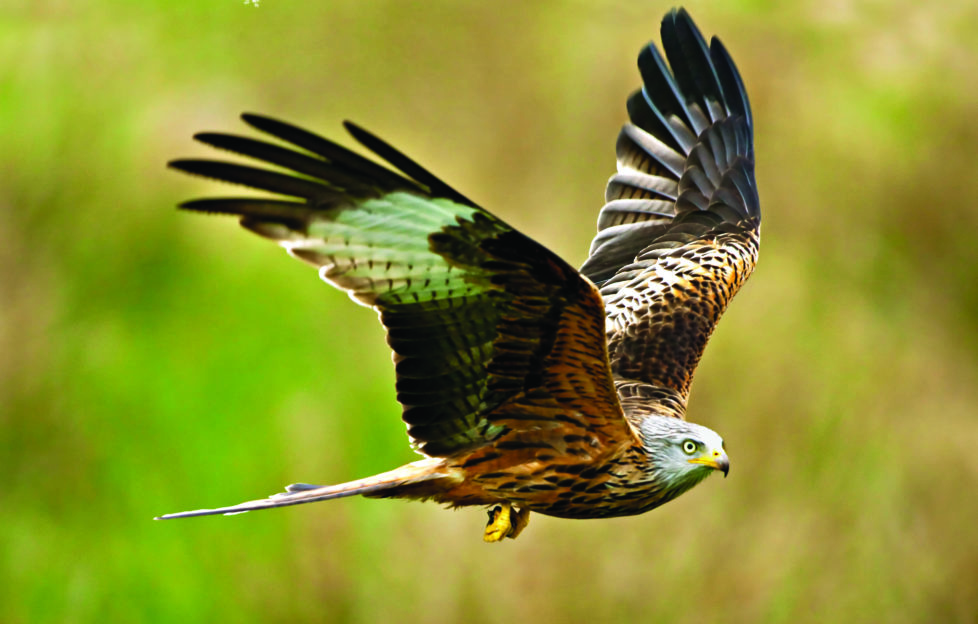

Jim Crumley talks about the Red Kite’s spectacular introduction… but a less impressive growth in numbers in the north of Scotland
The first time I ever saw a red kite, I was navigating a roundabout on the A9 somewhere north of Inverness, and in a blizzard. It was snowing so hard that the roundabout arrived in the middle of my windscreen as something of a surprise. All advance warnings of its arrival – things like road signs – were obliterated in a tumbling white fog, from which focal points were more or less totally absent.
There had been no other traffic for some time, at least none that I could see, I was driving at funeral cortege speed and in four-wheel-drive. I crept into the curve of the roundabout and at that moment a focal point emerged in the chaos of the blizzard. It was a red kite.
It was there, and then it was gone. For a moment it flew into my life, deathly slow, and draped in the gauze of the falling snow. Then it flew out of my life, the snow closed in again where it had been.
“A visitation”
I must have navigated the roundabout successfully, and on something akin to automatic pilot, for I lived to tell the tale and I didn’t hit anything. A few miles down the road I drove out of the snow and into the late evening light of early spring. I re-adjusted my driving technique to suit dry roads and actual visibility, found somewhere to stop for coffee, and sat by a window looking out at pine trees and re-running a film in my head of the roundabout, the blizzard, the trail-blazing ghost bird.
Sometimes in this nature writing life, the idea of a visitation is almost irresistible. If nature was determined to fashion a spectacularly symbolic first encounter guaranteed to hook me on red kites for life, it worked.
In those ten seconds, the bird appeared flying right to left. It is difficult to guess with any accuracy how far away it was, but it cannot have been more than about fifteen yards, and no higher than about a dozen feet above the roundabout.
“A bird on the move”
It flew slowly, seven or eight shallow wingbeats, the downstrokes beginning just above horizontal, then a glide into oblivion. The grey head, powdered white, had turned briefly to confront my headlights, then resumed its forward stare. This was not an encounter with a head-down hunter, but rather with a bird on the move, and having as much difficulty with simple forward movement as I was myself.
At this point, I had only ever seen photographs of red kites, mostly because of the widespread publicity attending their reintroduction into Scotland in 1989. But this creature at the intersection of our crossed paths was much larger than photographs had led me to believe, its “red” plumage much browner and darker and duller, and doubtless the viewing conditions explained both of those assessments.
The strikingly patterned and angled under-wings with their white flashes and black tips were where it came alive, and then there was that long, forked tail tilting constantly as the bird tried to maintain something like straight and level flight.
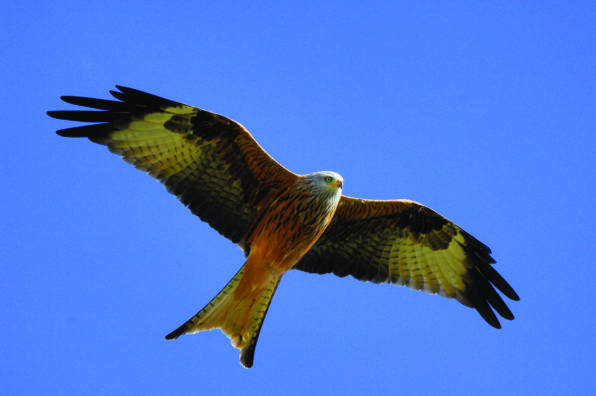
“The Black Isle”
I wondered what it could possibly be doing. What circumstance could possibly command it to fly in such weather at the height of such a storm with so little visibility? Or perhaps it was just lost and trying to find shelter. Whatever the reason, I am extraordinarily grateful to that bird for introducing me to its tribe in such a definitive way.
By the time we met, the reintroduction work on the Black Isle had been underway for about three years, and it was no distance at all from the Black Isle to that roundabout on the A9. It was, I told myself, a long way to come to watch red kites. But within three or four more years, a second reintroduction project would begin near Doune, a handful of miles from my doorstep, and I began to encounter regularly the limitless grace of kite flight in my workaday landscapes and skies.
“Twenty kites at a time”
More recently, they were a constant presence around the upper reaches of the River Earn when I was researching my beaver book, Nature’s Architect. They have been regular visitors to the airspace over St Fillans golf course where I have played for about fifteen years, and occasional predators in those wilder corners rarely explored by golfers (although if you are discomfited by a bad hook on the sixth…).
They hunt over the high moor south of Comrie and there is a winter roost not far off where their flying grace at dusk acquires a tumultuous quality in a kind of ritualised massed sky dance. Twenty kites at a time, extemporising a kind of fluid jazz ballet, is not a sight you will lightly forget.
Red kite extinction in Scotland happened around the end of the 19th century. By the 1970s, the entire British population could be traced to a single female in Wales. In Scotland, the culprits had been the usual suspects – the Victorian sporting estates (that infamous litany of destruction that is the Glen Garry game books from 1837-40 records the destruction of 275 red kites), Victorian egg collectors, Victorian taxidermists, and – almost as a by-product – the use of kite feathers for Victorian fishing flies, hence the expression “let’s go fly a kite”, no doubt.
“The call was answered”
It became obvious early in my beaver research on the Earn that I would be seeing and hearing a lot of red kites. They established their companionable presence within the first half hour of my first visit when I heard one cry directly overhead (a voice like a happy buzzard if your imagination can embrace such an image). The call was answered at once by a second bird. They drifted into view through a gap in the trees as they crossed the river about a hundred feet up, vivid chestnut red in high summer sunlight, white underwings flaring brilliantly as one of them banked.
In the weeks and months that followed, I would sit on the riverbank with a notebook in my lap while I waited for the beavers to appear, and every now and then the sky would call down to me through the gap in the canopy, and there was a kite or a pair of kites, mocking my incarceration among tree shadows while they flirted with wind and sunlight. Then, deep into autumn, I decided one day to explore upstream for other signs of beaver activity, but it was the kites that stole the show that day.
“Roll call of raptors”
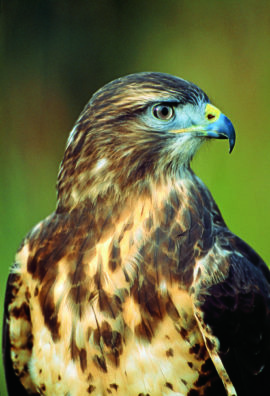 The river was much more open there and I turned and raised my binoculars towards what sounded like rather more than one buzzard. I found three of them above the woods to the south. They were wheeling, side-slipping, diving and soaring, and the excited edge of their calls cut brightly through the frosted air. And with them were four red kites, and their keener, giddier voices laced the melee with added confusion.
The river was much more open there and I turned and raised my binoculars towards what sounded like rather more than one buzzard. I found three of them above the woods to the south. They were wheeling, side-slipping, diving and soaring, and the excited edge of their calls cut brightly through the frosted air. And with them were four red kites, and their keener, giddier voices laced the melee with added confusion.
The red kite is a slender, leisurely, airy waltzer in the roll call of raptors, and a buzzard is halfway to being an eagle. This looked more like stuff-strutting than dog-fighting, perhaps a quarrel about status. From time to time within the chaotic and vaguely northwards progress of the group, a buzzard would climb above the kites and attempt to dive down through them, but each time, the kites split in four different directions, a waft of guile, so that the buzzard fell through the hole in the doughnut, as it were, after which the kites resumed their formation.
“Majestic and suddenly silent”
The kites seemed to be on the move from east to west, but the buzzards were trying to drive them northwards. Each time the kites reunited after a buzzard dive, they headed west again, and time after time the buzzards mobbed them from above, below and behind, and turned them north again towards the distant mountains. It was as if the kites presented some kind of impediment strewn across the buzzards’ path, and that they must be moved aside as a snowplough moves snow.
How long this confrontation might have persisted is anyone’s guess, but then I foresaw its denouement a second or two before it happened. There was another bird in the glasses much higher than the group I had been watching. Then there was another by its side, then another, then three more then…I shifted my binoculars onto this higher group and found a second tier of birds, and there were about forty of them, and they were all red kites.
Suddenly the buzzards were heading north and the four lower red kites rose and amalgamated seamlessly into these higher squadrons, and their majestic and suddenly silent bandwagon rolled on to the west.
Now tell me, why would anyone want to kill such birds?
“The first reintroduction”
The thing is, the worst excesses of the Victorians have been handed down through generations of landowners and estate workers, and a substantial proportion still put them into practice today. Consider, for example, the recent history of the Black Isle population of red kites.
In April, 2014, and over an area of just two square miles of the Black Isle, the carcases of sixteen red kites were found. Twelve of the sixteen were confirmed as victims of poison. That first reintroduction, between 1989 and 1994 had comprised ninety-three birds from Sweden. At the same time, a similar number of birds were reintroduced into the Chilterns in Buckinghamshire. The record of productivity of those birds which lay eggs has been more or less the same in the intervening years, but today, the Chilterns population is ten times that of the Black Isle.
A report commissioned by Scottish Natural Heritage and published last October, showed that the level of persecution has not changed in twenty-five years. It was clear, said the report, “that illegal killing is still the major factor limiting population growth of red kites in North Scotland”.
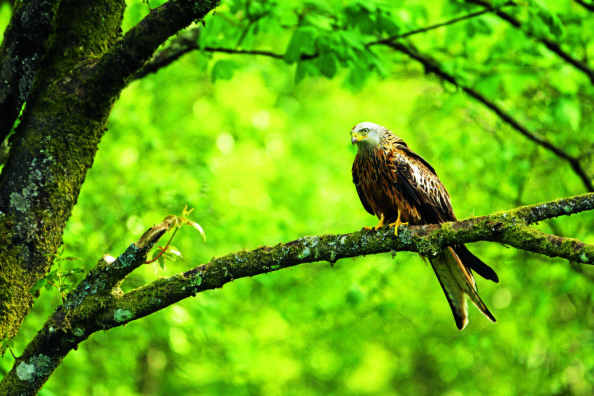
“Today…”
Today, that population stands at around seventy pairs. The report concluded that without illegal killing, “that number could have been as many as fifteen hundred pairs”.
When I began my beaver research and realised that red kites would be a significant incidental part of the process, I wrote: “There is no relationship between kites and beavers that I am aware of, and I am having difficulty contriving circumstances in which there could possibly be a relationship.”
I quickly changed my tune, and a few pages later I wrote:
“An awareness of killing on that scale is surely as deeply ingrained in the DNA of the reintroduced beavers as it is in the DNA of the red kite. That is the nature of the relationship between them.”
You can read more of Jim Crumley’s Scottish wildlife columns online here, and each month in The Scots Magazine.


